|
Andersonville Prison Camp (February 1864 - April 1865) was a Confederate Prison Camp for Union soldiers during
the Civil War. It was located in Americus, Georgia. It was the most feared prison camp of it's day by Union soldiers. 52,
345 prisoners of war stayed here for that year, and 13, 900 Union soldiers are buried in the adjoining cemetary.Today, Andersonville
is a historical site. People can pay their repsects to those who died in it and visit the adjoining cemetary.
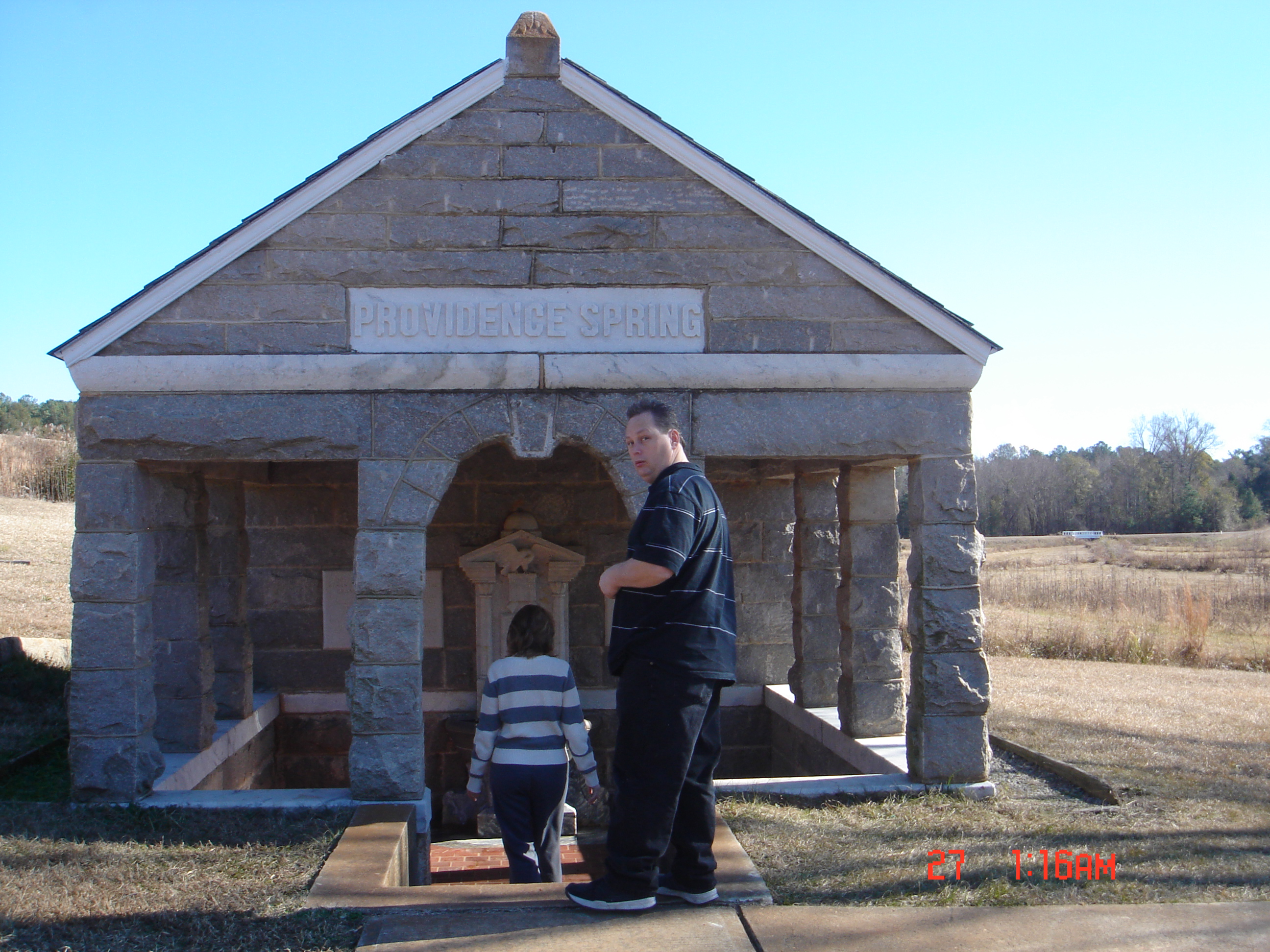
Providence Spring
"During a heavy rainstorm on August 14, 1864, a spring suddenly gushed from the hillside. The prisoners were desperate
for fresh water, and over time the event became legendary. Several men claimed to have seen lightning strike this spot just
before the spring burst forth. This damp slope, with its many natural seeps, would appear to be a likely site for a spring.
Workmen may have inadvertently buried the spring's outlet while digging the stockade trench. Whether an act of nature or divine
providence, the effect of the stream was an answer to thousands of prayers."
-Sign in front of Providence Spring-
"A spring of purest crystal water shot up into the air in a colomn and, falling in a fanlike spray, went babbling down
the grade into the noxious brook. Looking across the dead-line, we behend with wondering eyes and greatful hearts the fountain
spring."
-John L. Maile
8th Michigan Infantry
August 15, 1864
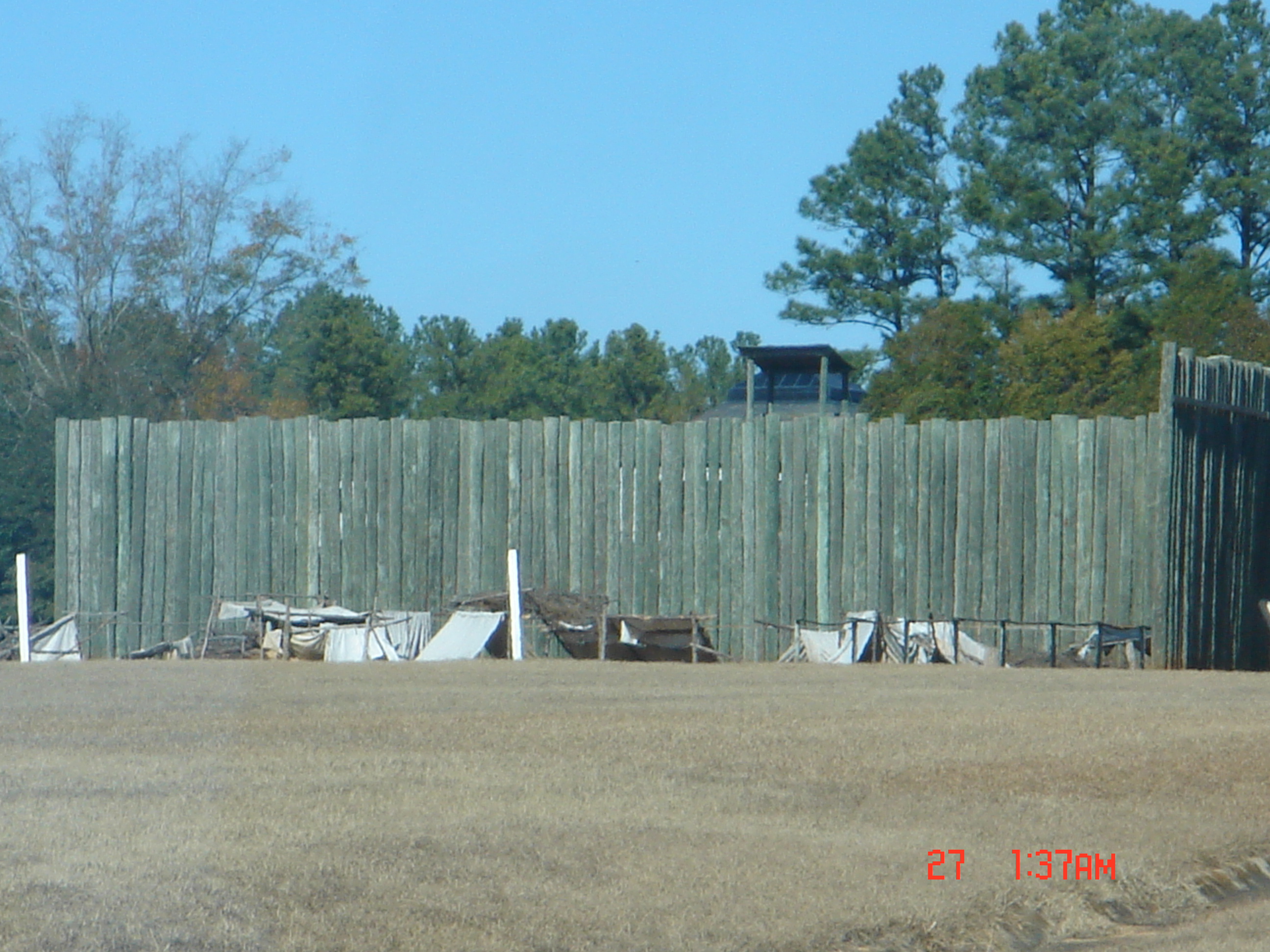
"The trail follows the footsteps of newly arriving prisoners. Captured Union Soldiers marched from the village railroad
station, past this spot, and uphill to the North Gate, the main prison entrance. After prisoners passed through the outer
door, it was barred behind them. The inner gate swung open on the prison yard. New arrivals, or "fresh fish" as they were
often called, had no idea what awaited them there."
-The sign in front of the North Gate-
"Five hundred weary men moved along slowly through the double lines of guards. Two massive wooden gates, with heavy
iron hinges and bolts, swung open as we stood there, and we passed through into the space beyond. We were in Andersonville."
-Private John McElroy
16th Illinois Calvary-
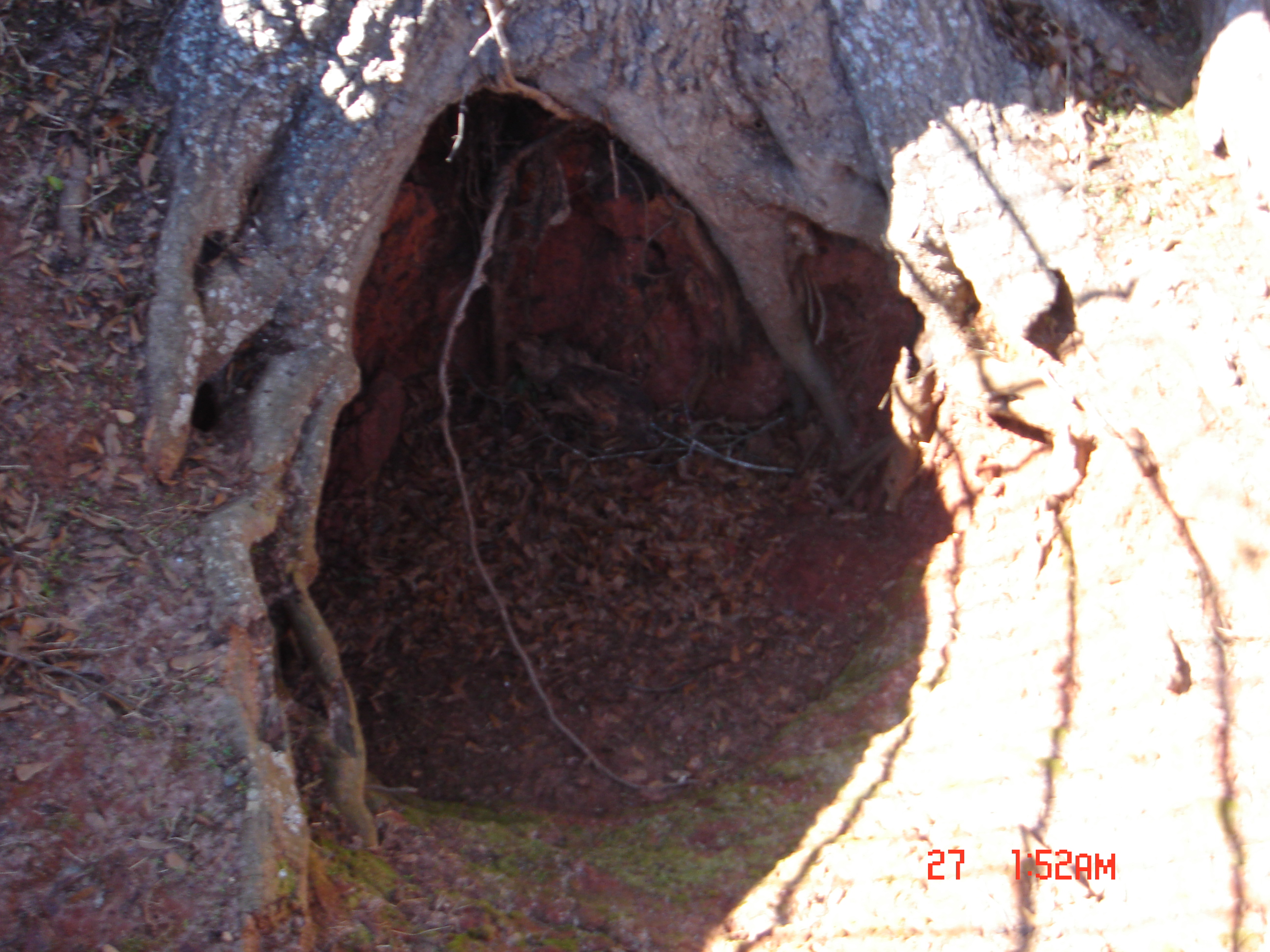
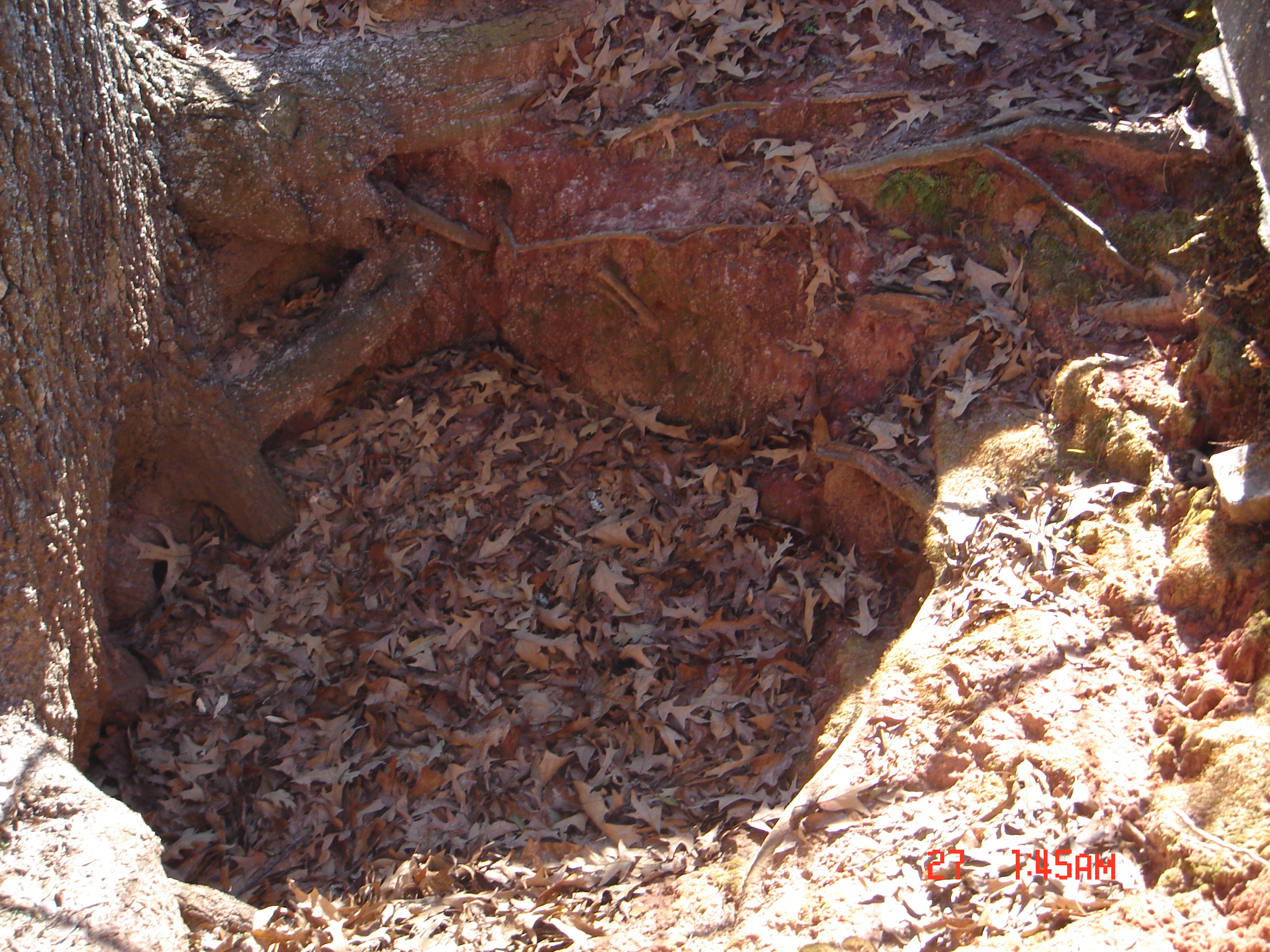
"The ground at this end of the prison is pocked with deep holes - either tunnels or wells. Overcrowding disguised the
digging. Beneath the sea of tattered shelters, prisoners could work undetected with mess plates, spoons, and canteen halves.
It is tempting to call every excavation an escape tunnel, but many may have been wells. With the camp stream lethally polluted,
the search for fresh water was as urgent as the need to escape."
-Sign in front of the first escape tunnel-
"Just as it was coming light in the east we heard dogs coming after us. In a few moments the hounds came up with us and
began smelling of us. Pretty soon five mounted rebels arrived on the scene of the action. They laughed to think we expected
to get away."
-John L. Ransom
9th Michigan Calvary
April 26, 1864
|
 |
|

"This empty field was the site of Andersonville's third and last hospital. There were two previous hospitals within nine
months. It did not take prisoners long to realize that few patients returned. Knowing that medicines were in short supply,
even the sickest men resisted going to the hospital. They preffered to die among friends and regimental comrades."
-Sign in front of the board and field where the hospital once was.-
"The hospital is a tough place to be in...In some cases, before a man is fairly dead, he is stripped of everything, coat,
pants, shirt, finger rings (if he has any). These the nurses trade to the guards."
-John L. Ransom
9th Michigan Calvary
April 15, 1864
"Father Peter Whelan, an Irish born Catholic priest from Savannah, arrived at Andersonville on June 16, 1864, to minister
to the sick and dying. While other priests visited for brief periods, Whelan remained for nearly four months during the hottest
season and the time of the highest mortality. At the end of his stay, Whelan borrowed money to purchase ten thousand pounds
of wheat flour. Baked into bread and distrubuted at the prison hospital, this food became known as "Whelan's Bread." It lasted
many months and probably saved many lives."
-Sign in front of the hospital-
"By coming here he exposed himself to great danger of infection... His services were sought by all, for, in his kind
and sympathizing looks, his meek but earnest appearance, the despairing prisoners read that all humanity had not forsaken
mankind."
-Private Henry M. Davidson
1st Ohio Light Artillery-
|
|
 |
|
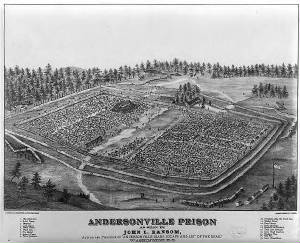
Andersonville Prison by John L. Ransom.
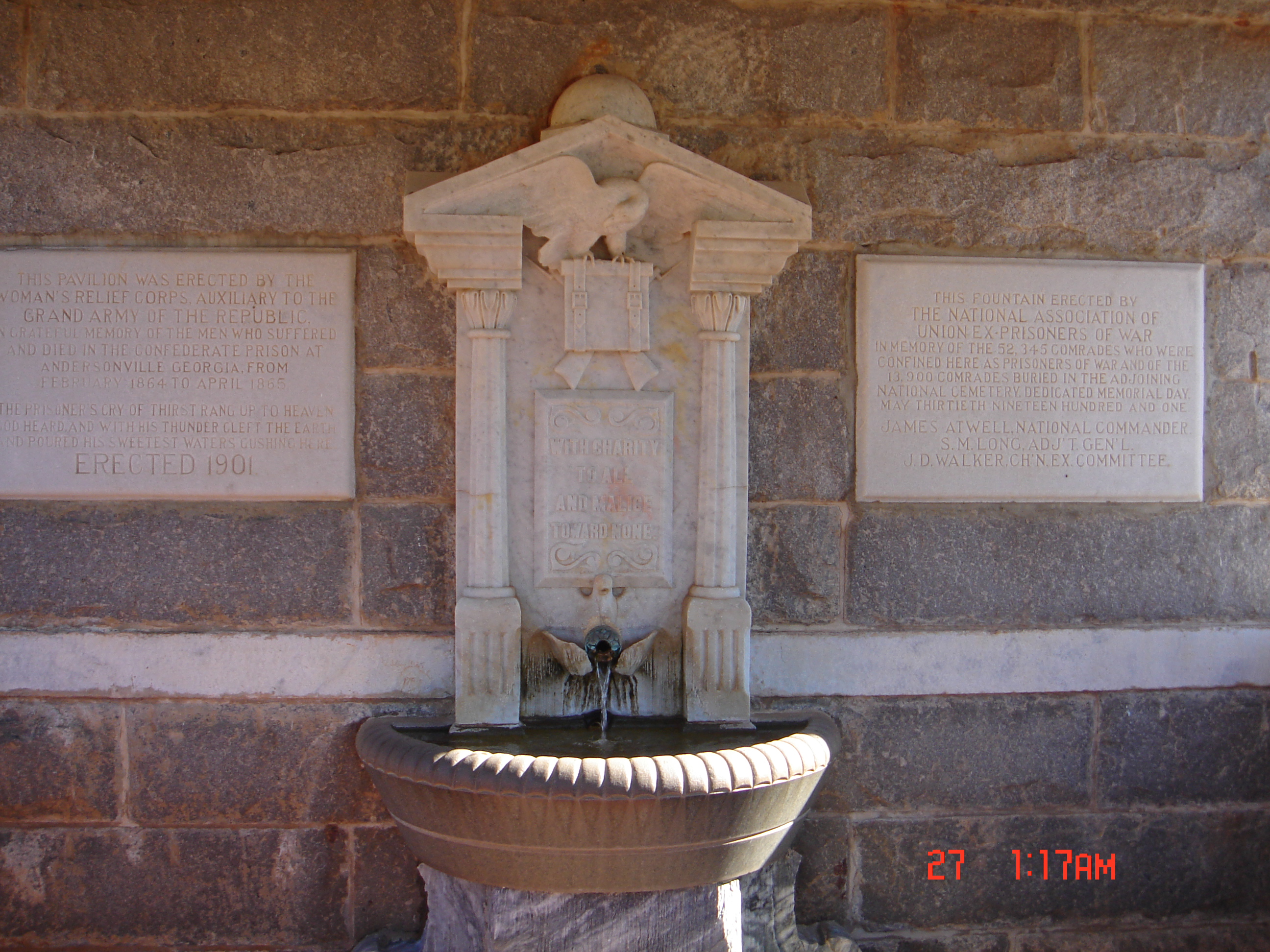
The plaque to the left says:
"This fountain erected by the National Association of Union Ex-Prisoners of War. In memory of the 52, 345 comrades who
were confined here as prisoners of war and of the 13, 900 comrades buried in the adjoining National Cemetary. Dedicated Memorial
Day, May Thirtieth Nineteen Hundred and One."
James Atwell, National Commander.
S.M. Long, ADJ'T GEN'L.
J.D. Walker, CH'N. EX. Committee
The Fountain Says:
"With Charity to All and Malice Towards None."
The plaque to the right says:
"This pavilion was erected by The Woman's Relief Corps, auxiliary to the Grand Army of the Republic. In grateful memory
of the men who suffered and died in the Confederate prison at Andersonville, Georgia, from February 1864 to April 1865. The
prisoners cry of thirst rang up to Heaven God heard, and with his thunder cleft the Earth and poured his sweetest waters gushing
here. Erected 1901."

When prisoners started arriving in Andersonville they dug latrines near the dead line. (A wooden line that went throughout
the stockade, if prisoners went over it they would be shot or killed.) Prisoners put two boards to stand on over the pits
and would do their business there.
|
 |
|
|
|

